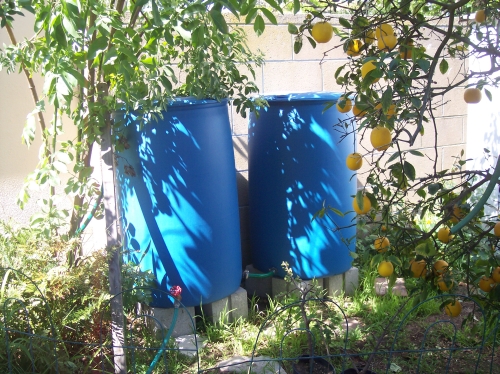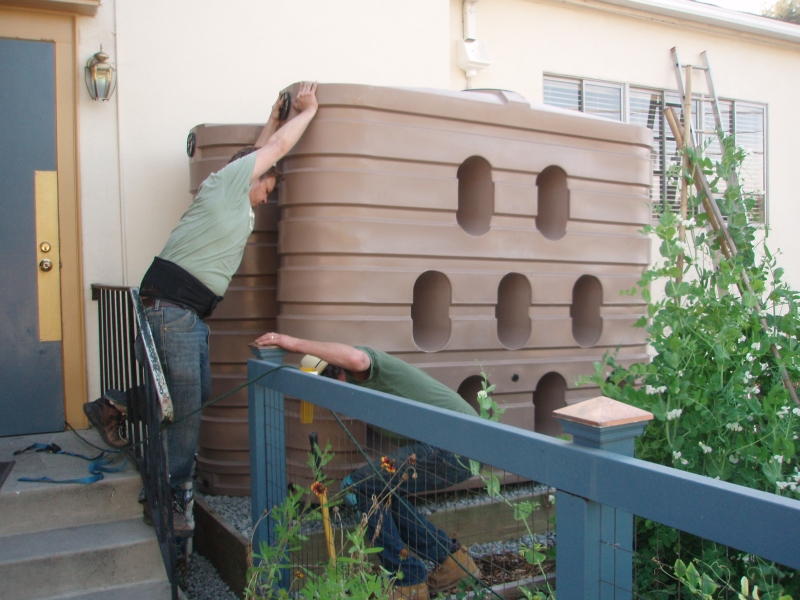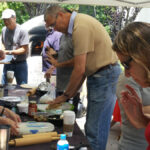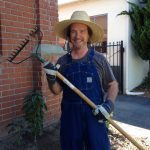
Rainwater harvesting: Capture and Store devices
I’ve written before about rain barrels. At the Community Garden at Holy Nativity, we have rain tanks. TreePeople has a massive cistern up on Mulholland.
All of these devices — rain barrels, rain tanks, cisterns — are what are considered “capture & store” devices. Capture the rain, and store it for your own personal future use.
Rain barrels
Rain barrels will fill to capacity in the first moments of the first storm. You’ll get about 55 gallons of water for each barrel you install. Yes, you should have rain barrels — several — because every drop counts. Small-scale rain barrels will help you to water your container plants through next summer (and they are an excellent resource for that purpose), but you need more than that.

Rain tanks
Rain tanksthe size of Holy Nativity’s will fill in a single decent-size storm. Rain tanks are expensive, and we have yet to resolve some of the problems with them (pressure, leveling, cleaning out, habit change – more on these in another post). But they are likely the new reality for most Southern California homes.

During Australia’s long-term drought, they reached a point where residents were forbidden to water landscapes unless the water came from a rain tank; most households installed a big one. In Monterey CA, they have had rebate programs to encourage homeowners to install rain tanks. More info about rain tanks from the city of Monterey.
Cisterns
Tree People installed a cistern under their parking lot. Now we’re talking. By my amateur calculations, the enormous Tree People cistern captures slightly more than a single family home’s annual Tier 1 water use. But you won’t have space for one of these at your house, unless you’re doing tear-down level reconstruction of your home.
- about TreePeople’s cistern – page includes time-lapse of installation
- more about TreePeople’s cistern
- see inside TreePeople’s cistern
Meanwhile I learned that the City of San Francisco apparently has a network of cisterns, (cite 1, cite 2) not as large as TreePeople’s, but significant in that they are distributed throughout the city. They were installed circa 1908 as a backup fire-fighting plan.
This is part 2 in my series on Rainwater Harvesting.


